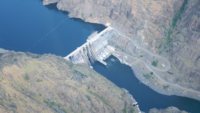The Environmental Protection Agency and Army Corps of Engineers have proposed a new regulation that aims to clear up the murky definition of which bodies of water fall under federal regulatory jurisdiction.
The definition is important because contractors who want to build near federally regulated “waters of the United States” must obtain a Corps of Engineers permit before they can start work.
Reactions to the proposed rule, which the agencies released jointly on March 25, came quickly and were sharply split. Construction industry and other business groups blasted it as a regulatory over-reach, but environmental organizations welcomed the plan.
EPA Administrator Gina McCarthy, in a brief YouTube video, said, “Our proposal does not add to, or expand, the scope of waters historically protected under the Clean Water Act. It clarifies which waters are protected and which waters are not.”
She added that the proposal “cuts red tape” and “gives certainty to business.”
In their proposed regulation, the agencies say that “the scope of regulatory jurisdiction in this proposed rule is narrower than that under the existing regulations.”
But industry officials disagree. Kevin Kelly, National Association of Home Builders president, said in a statement that “EPA has added just about everything into its jurisdiction by expanding the definition of a tributary‑even ditches and manmade canals, or any other feature that a regulatory determines to have a bed, bank and high-water mark.”
Michael Johnson, National Stone, Sand & Gravel Association president and CEO, called the revision “a dramatic, unwarranted and unwise change.”
Johnson noted that violations of the rule could cost builders fines of as much as $37,500 per day and said that it “will drive small companies out of business.”
On the other hand, environmental groups welcomed the proposal. Trip Van Noppen, president of Earthjustice, an environmental litigation organization, said the proposed regulation “finally restores protections so that we can begin the hard work of cleaning up our waters for our children to swim in, fish in and drink from.”
The U.S. Supreme Court, in decisions issued in 2001 and 2006, tried to tackle the question of which waters are federally regulated, but the rulings did not settle the issue.
Under the new proposal, many types of water bodies that now are federally regulated would continue to hold that status. They include waters used in interstate commerce, as well as interstate waters, interstate wetlands and tributaries of navigable or interstate waters.
One change under the proposal is to have other bodies of waters that have a "significant nexus" to navigable or interstate waters defined as federally regulated only if they pass a case-by-case evaluation.
The term "significant nexus" was the key phrase in both the 2001 and 2006 Supreme Court case in determining whether a particular waterway is a water of the U.S.
EPA and the Corps now will take public comments on their proposal for 90 days after it appears in the Federal Register.




Post a comment to this article
Report Abusive Comment